Survival gardens can be a lifeline in times of crisis, but what happens when you need to keep yours hidden from prying eyes. Whether it’s to protect your crops from thieves or simply to maintain discretion in an urban setting, concealing your garden is a challenge many gardeners face.
There are plenty of creative, effective ways to shield your green space without sacrificing productivity. From cleverly disguising plants in plain sight to incorporating.
Natural elements that blend seamlessly into your environment, this guide will explore foolproof methods to hide your survival garden. Ready to protect your plants and ensure your harvest remains your secret.
1. Fence Line Trellis Camouflage Garden
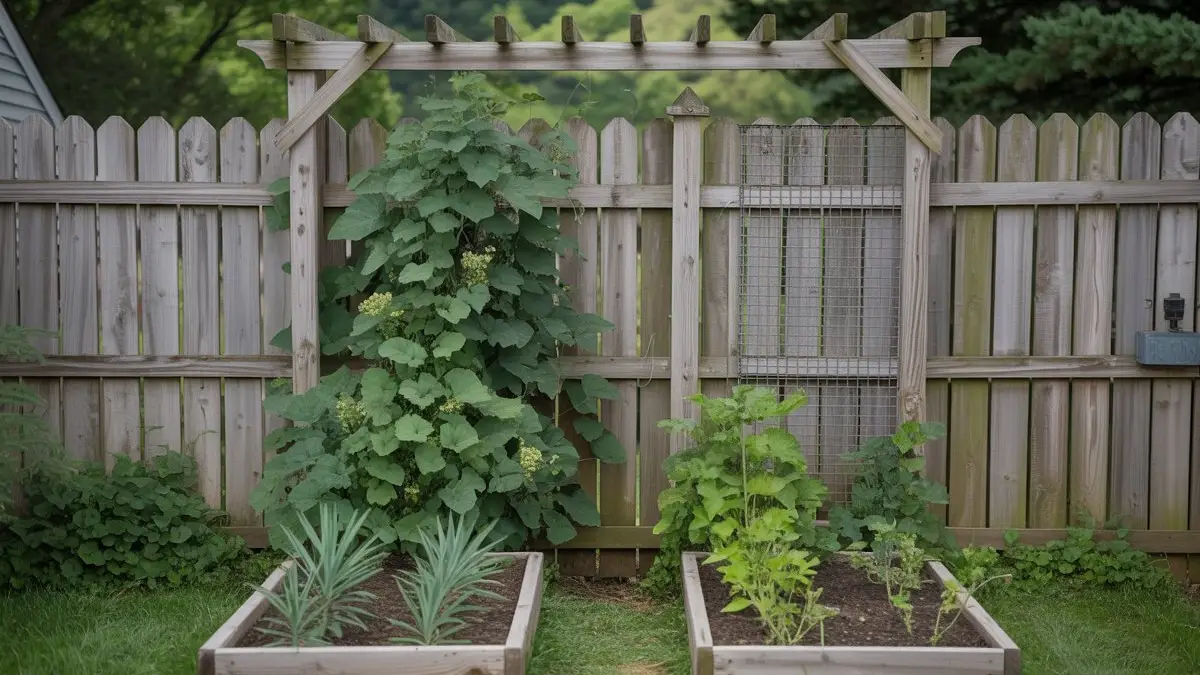
This setup turns a plain fence into a quiet screen that conceals food production in plain sight. A simple arbor with wire panels hosts climbers like pole beans, cucumbers, or hops that read as ornament first and pantry second.
Raised beds hug the fence and keep a low profile, while structural greens such as garlic or hardy leeks mimic landscape plants. Mulch the soil, tuck a drip line underneath, and you’ve got a tidy border that looks like landscaping to neighbors and passersby.
Edible perennials at the corners add cover and reduce maintenance. A slim gate and lattice panel suggest a decorative feature rather than a working plot. Stagger heights so tall vines sit mid fence and shorter herbs sit front edge to break sightlines.
Paint wood to match the fence and the beds blend even more. From the street it reads as backyard decor. Up close it becomes a productive, resilient system that fits any list of ways to hide your survival garden.
2. Pergola Patio Disguise Garden
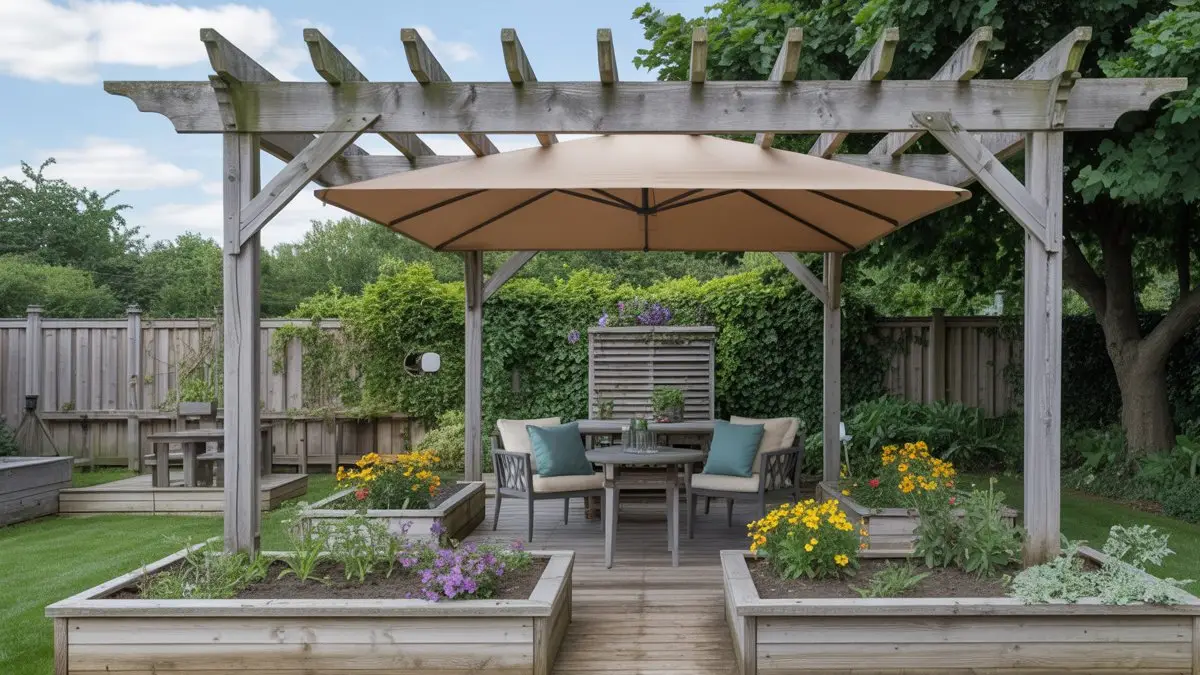
Picture a cozy outdoor room where friends linger over tea while your food forest hums along unnoticed. A sturdy pergola frames a shaded seating nook, and the umbrella invites guests to sit, so eyes land on cushions and tableware instead of crops.
Raised beds ring the walkway and look like decorative borders, yet the mix tells a quieter story. Marigolds and coreopsis charm pollinators while peppers, bush beans, and compact tomatoes blend into the color show.
Soft herbs fill the corners with scent, and lettuces hide under the canopy for cool growth. A slim trellis at the back supports cucumbers or vining beans and reads as a privacy screen.
Containers on the tabletop pass as decor but hold cut and come again greens for daily harvests. Keep edges crisp, mulch deeply, and run a drip line beneath the soil so the layout stays tidy.
Add a few non edible planters near the fence to further mask intent. From a glance it feels like a stylish patio garden. For you it doubles as a steady, resilient survival pantry.
3. Backyard Greenhouse Workshop Decoy
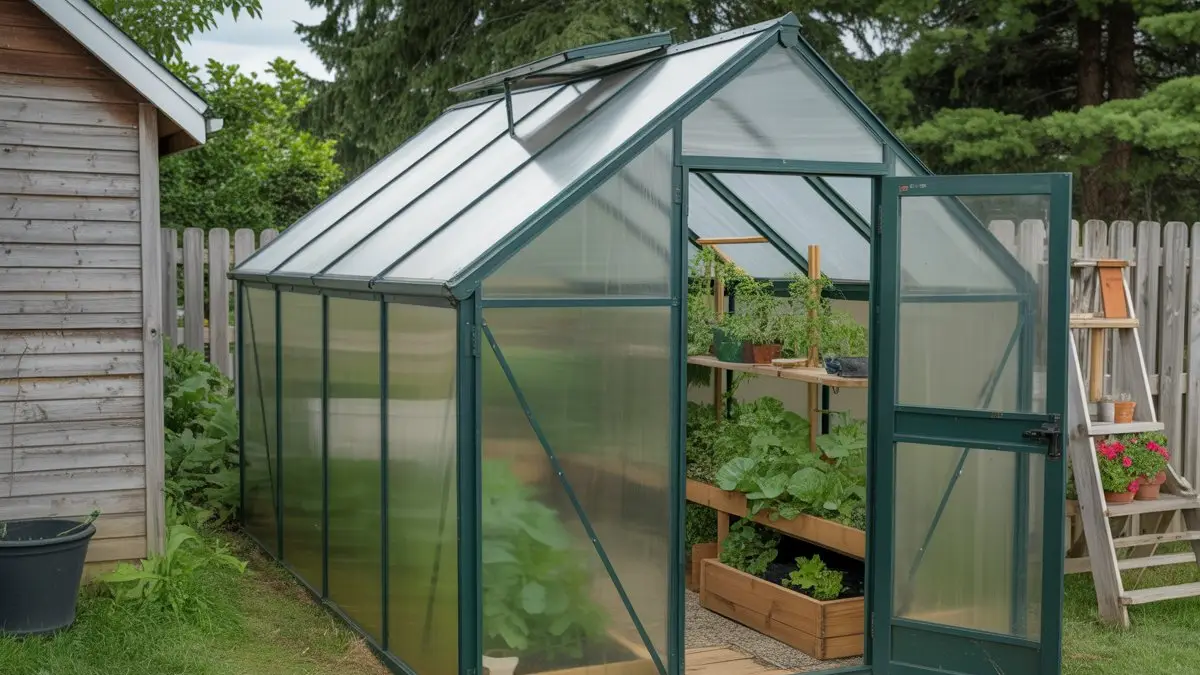
Call it a hobby shed and no one looks twice. This compact polycarbonate greenhouse tucks against a fence and reads as a tidy project space while it shelters a steady food supply.
Shelving along the wall displays starter pots and herbs that pass as plant experiments, yet trays below grow leafy staples like lettuce, chard, and bok choy in rotation.
A gravel floor and raised boxes keep things clean so visitors see order instead of production. Place a small ladder shelf with bright flowers near the door to sell the workshop story.
Store hand tools and a watering can on hooks to complete the look. Vent the roof on sunny days for steady airflow and keep a simple fan ready for heat spells. Stash flats of seedling refills under the benches and swap them in as you harvest.
Close the door at dusk and clip on a basic lock. From the yard it feels like a gardening hobby. For you it becomes a quiet, reliable answer to ways to hide your survival garden.
4. Hedge Row Edible Border
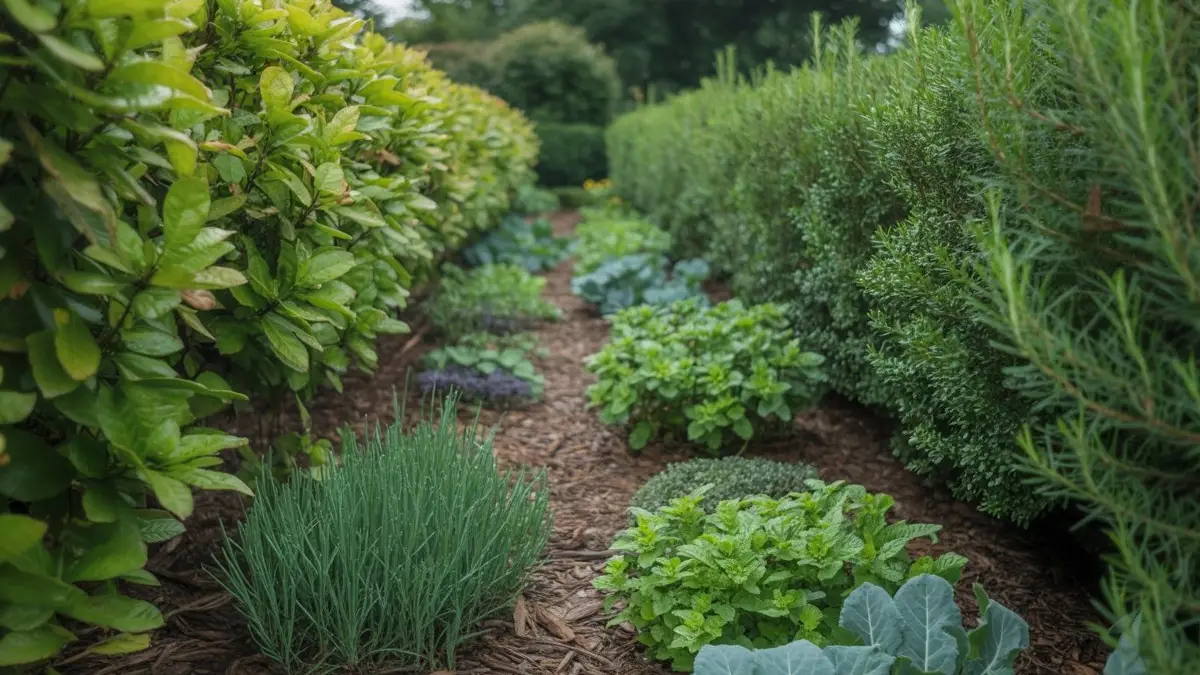
Turn a trimmed hedge into a quiet supply line. Between evergreen walls, tuck culinary workhorses that read like ornament. Clumps of chives, mint, thyme, and compact brassicas fill the mulch with neat mounds and natural symmetry.
To most eyes it looks like a formal foundation border. To you it is breakfast, lunch, and a stash of healing herbs. Plant in repeating groups to mimic landscape rhythm and to smooth harvest gaps.
Place taller rosemary or bay near the back and keep low growers at the path for easy snips. Mulch deep to lock in moisture and hide irrigation tubing. Drip emitters keep leaves clean and footsteps light.
Pollinators cruise the thyme flowers, then carry that help to fruit trees nearby. A narrow walkway allows quick access without calling attention. Rotate greens by season while the hedge keeps its shape and covers the view year round.
Add a few non edible shrubs as decoys near entrances. Neighbors notice a tidy corridor of green. You walk through a disguised survival garden that feeds the household in steady, quiet cycles.
5. Rooftop Bistro Balcony Garden
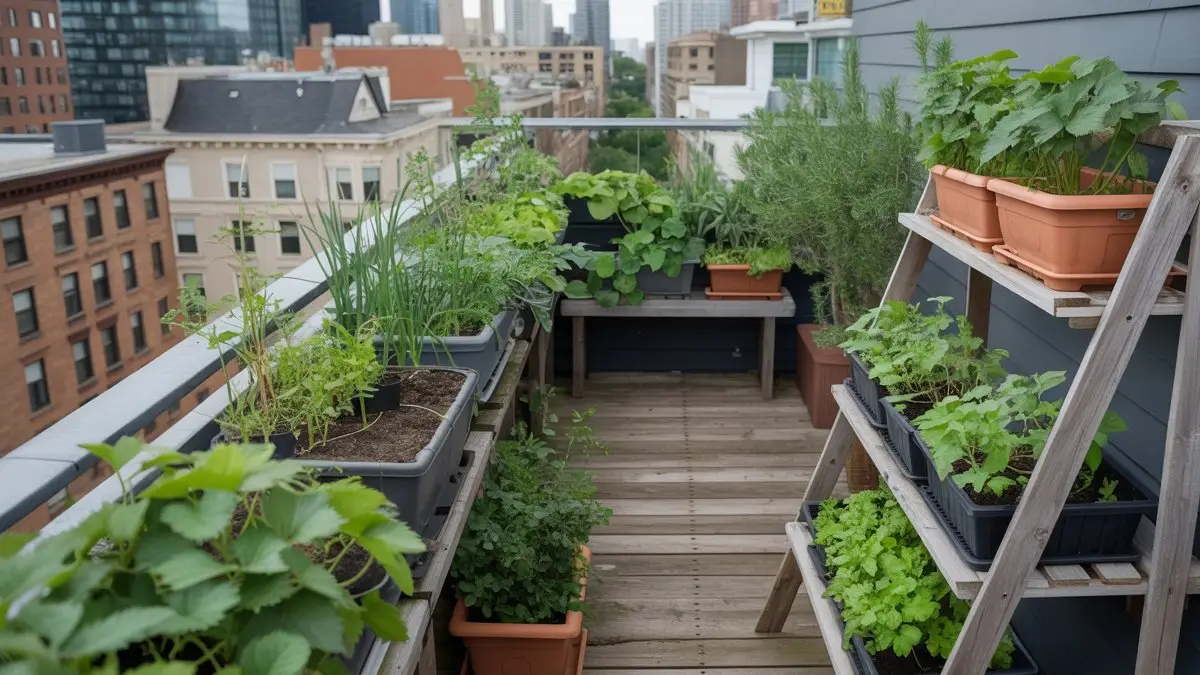
City views make a fine cover for a stealth pantry. Along the railing, slim trough planters pass as balcony decor while lettuce, scallions, kale, and strawberries pull their weight in meals.
A wooden ladder rack stacks shallow trays of cut and come again herbs so the setup reads like a chef’s bistro garden. Guests see rosemary and mint in pretty pots and think cocktails, not calorie insurance.
Use self-watering inserts or drip lines set on a timer to keep growth steady without fuss. Place compact cucumbers and bush beans at the far end so vines drape like greenery, not crops.
Rotate quick crops every three weeks to keep planters lush and productive. Tall planters near the corners block sightlines from neighbors and soften wind. A small bench hides storage for soil, seed packets, and a hand sprayer.
Choose lightweight potting mix with added compost for strong yields. Sweep the deck often and trim spent leaves so the space always looks like a tidy balcony retreat. To you it is a rooftop lifeline that blends right into the skyline.
6. Cabin Shed Concealment Garden

Rustic shed anchors a smart bit of camouflage. The log-faced walls pull attention away from the raised beds beside it, where leafy greens and herbs grow quietly.
Vines climb the fence and soften the edges, turning the space into what looks like a cottage retreat. In reality, it’s a hidden survival garden producing steady harvests all season long.
Keep taller crops near the fence line to mask the beds and let flowering perennials near the path create a friendly, ornamental look. A simple path of grass or gravel keeps the area easy to maintain while inviting natural movement.
The shed itself doubles as storage for seed stock, soil, and preserved goods, blending utility with charm. Stack wood, hang small tools, and add a few wildflowers to complete the story.
From the gate it feels like a peaceful backyard hideaway. Step closer and you’ll see a cleverly disguised food system built for resilience and self-reliance.
7. Understory Food Forest Nook
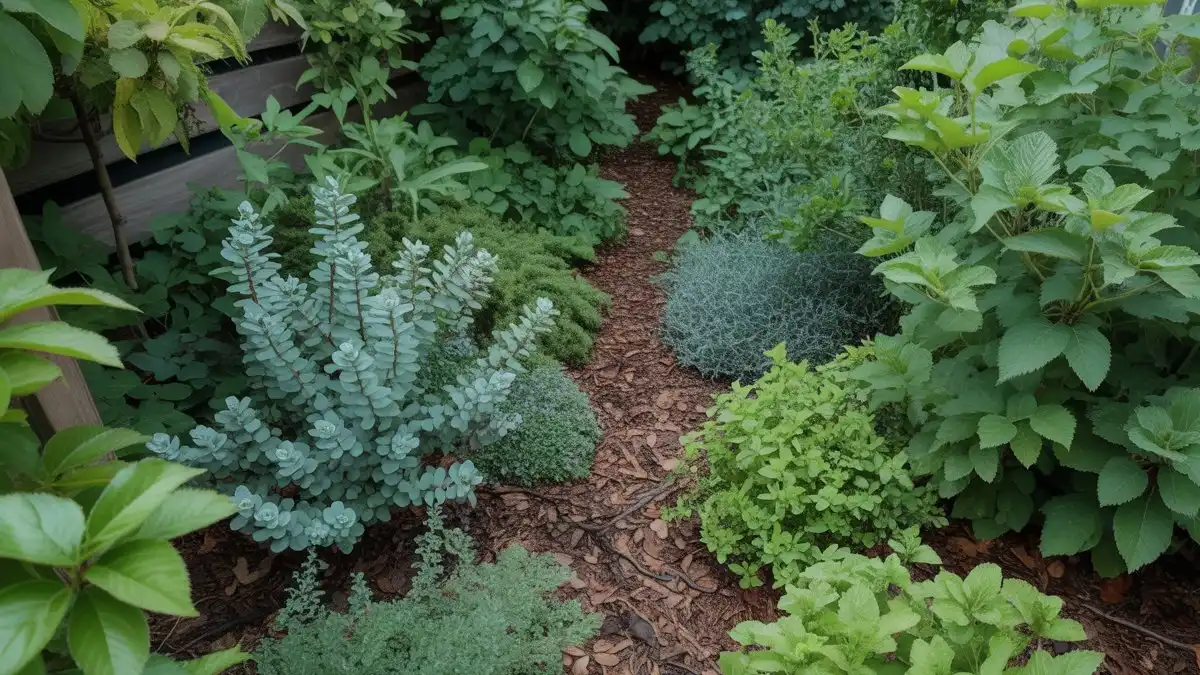
Tuck your pantry into a lush corner and let it read like a botanical collection. A narrow mulch path winds through textured mounds of edible perennials and herbs, so guests notice form and color before they ever spot dinner.
Silvery sea kale sits beside upright thyme and creeping oregano, while mint and lemon balm fill gaps with fragrance that covers harvest marks. On the shadier side, nettles and woodland greens thrive as a quiet nutrient bank.
Plant in clusters that repeat down the path to mimic ornamental design and to keep the eye moving. Taller shrubs shelter tender plants and create a layered look that doubles as habitat for helpful insects.
Deep mulch hides drip lines, holds water, and muffles footsteps. A simple twig trellis tucked at the edge guides beans or cucumbers without shouting utility. Keep pruners in a pocket and snip discreetly as you walk.
From the patio this reads as a curated shade garden. For you it becomes a dependable, year round understory that feeds soups, teas, and salads while staying out of sight.
8. Lattice Fence Hidden Harvest Garden
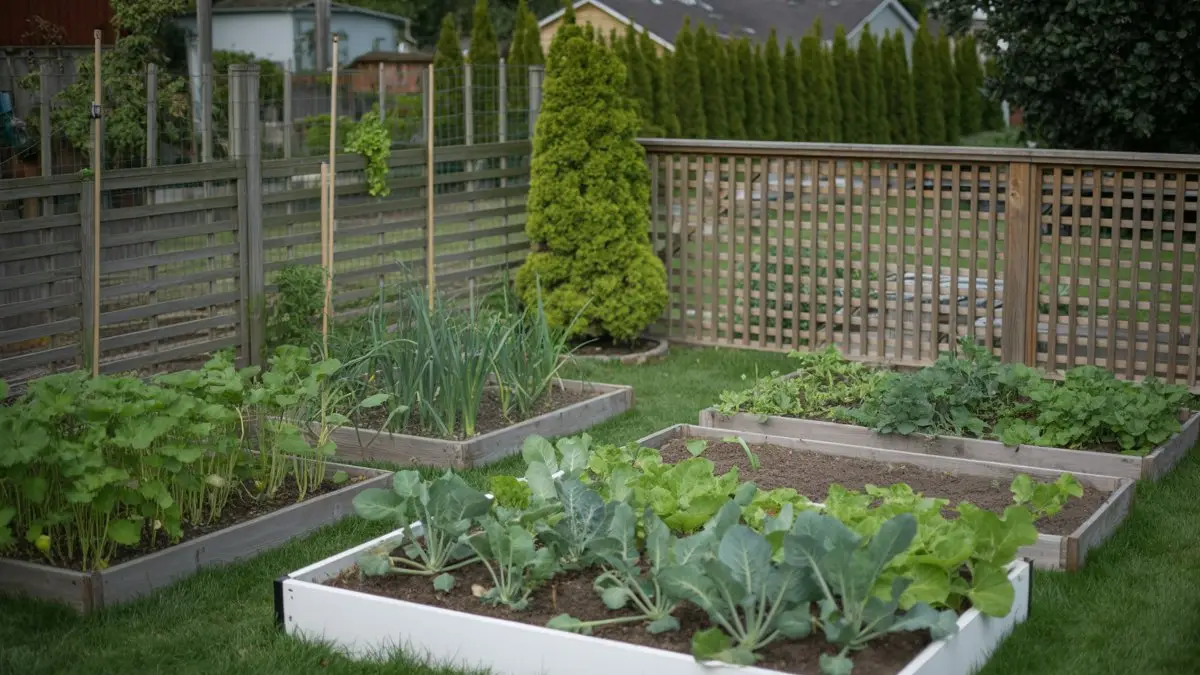
A simple yet effective way to camouflage your survival garden is to use a clean, well-maintained setup with strategic fencing. Here, the raised garden beds blend seamlessly into the landscape, while the lattice fence adds a decorative touch that also serves as a screen.
The neat rows of vegetables, including leafy greens and root crops, look like part of a carefully designed backyard garden. Tall, upright plants such as onions or herbs are placed along the edges, while crops like kale and lettuce fill the middle beds for a layered effect.
The spacing between the garden beds allows for easy access, but the lattice fence serves as a subtle barrier, keeping the garden out of sight from casual passersby.
The wood fencing is in harmony with the garden’s rustic vibe, giving the illusion of a decorative area, while the vegetables quietly contribute to self-sufficiency.
Fence also allows for additional climbing plants, enhancing the garden’s vertical dimension and adding further privacy. This type of garden blends food production with aesthetics, providing a hidden yet thriving survival garden right in the heart of a residential yard.
9. Camouflaged Crop Canopy
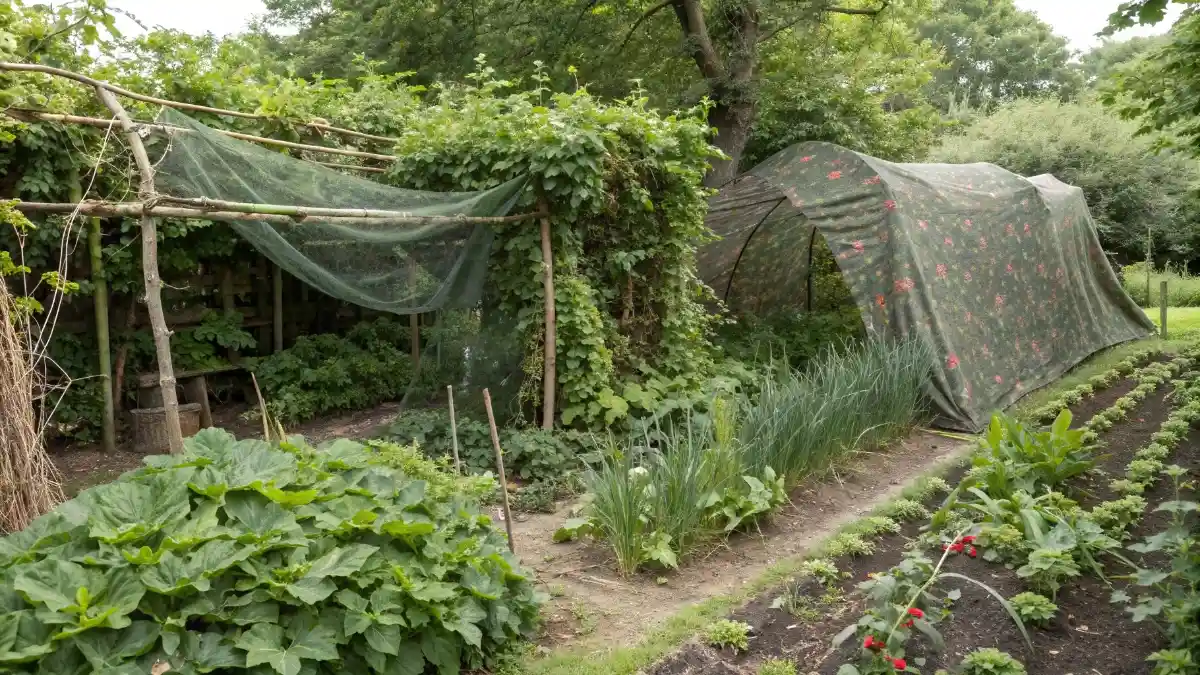
Transform your survival garden into a secluded, hidden space with a canopy structure draped in patterned fabric. This rustic setup uses natural materials like bamboo and poles to create a simple frame, while the floral cloth blends with the surrounding greenery, offering a soft visual break.
The canopy’s design protects tender crops, like leafy greens, from pests and weather, all while hiding the garden from prying eyes. The mesh netting on the side can keep insects away while still allowing airflow, creating a discreet growing area.
Raised beds full of root vegetables, herbs, and other low-growing plants flourish underneath. The fabric cover provides enough cover to obscure the garden’s true purpose while still letting the crops thrive.
This clever disguise can easily blend into the landscape, creating the illusion of a simple decorative garden structure. With a little creativity, this canopy setup hides a fully functional survival garden, offering privacy and protection for your food supply while maintaining a low profile in any backyard.
10. Urban Potager Garden
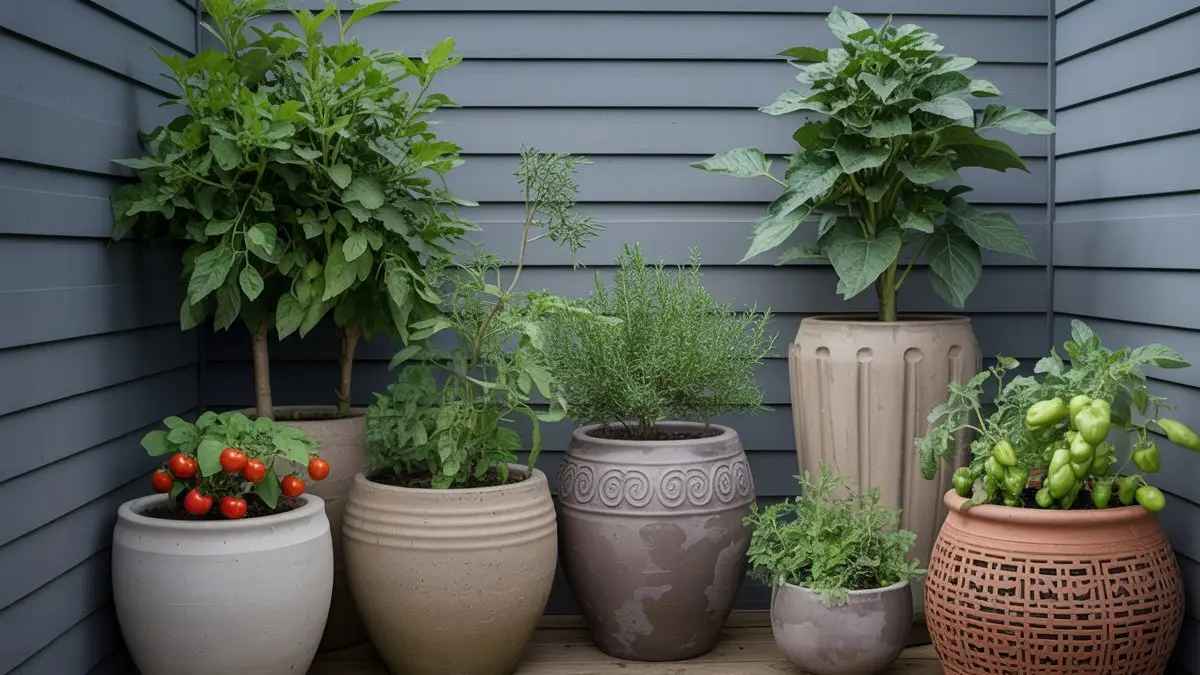
When space is limited, containers become a game-changer for hiding your survival garden. This charming corner of potted plants offers a subtle yet highly productive setup.
A variety of herbs, tomatoes, and leafy greens in decorative pots line a wooden deck, hidden away from plain view. Tall planters hide the height of plants like tomatoes, while trailing herbs spill over the edges, blending in with the urban landscape.
The carefully chosen pots in neutral tones complement the outdoor decor, making the garden feel like part of the design rather than a food source. This small-scale container garden thrives in a corner where it’s tucked between walls, offering you privacy while still producing food in abundance.
The raised planters are easy to maintain and harvest, with each plant growing at its own pace, filling the space with color and life. From a distance, this setup could be mistaken for decorative greenery, but up close, it’s a clever survival garden that makes the most of limited space while staying hidden in plain sight.
11. Repurposed Fence Corner Garden

This clever use of a corner space transforms a basic backyard into a hidden food-producing zone. Raised beds, tucked neatly along the fence line, allow for easy access to fresh vegetables while staying discreet.
The gravel pathway between the beds provides a clean, tidy look while ensuring the plants stay neatly organized. Vegetables like lettuce, kale, and tomatoes grow alongside herbs, their vibrant green leaves blending in with the surrounding foliage.
The fence acts as a natural divider, providing privacy while helping to shield the garden from prying eyes. The compact design keeps everything within reach but out of view from the street.
This setup combines aesthetics with function, using the fence and simple materials like raised beds and gravel to create a space that looks like a well-kept garden nook only closer inspection reveals the life-sustaining crops within.
By choosing the right plants and using the fence’s natural structure, this small corner becomes a highly efficient and hidden survival garden.
12. Shade Tree Herb and Veggie

Tucked-away garden spot under the shade of a tree offers both seclusion and practicality, making it a hidden gem for a survival garden. Raised wooden beds neatly contain herbs like mint and oregano, along with fresh vegetables like onions and kale.
The dense tree canopy provides both shade and privacy, keeping the garden out of sight from the street while allowing the plants to thrive in a cooler environment.
The small mushrooms in the foreground add a whimsical touch, contributing to the garden’s natural feel. With the gentle sunlight filtering through the branches above, the space feels like a peaceful retreat, yet it serves as a stealthy food source.
The simplicity of the layout, paired with the natural materials of the raised beds, blends seamlessly into the surrounding landscape. This setup is a clever way to use available space and existing garden features, providing privacy and a reliable food supply without drawing attention.
The surrounding greenery and the placement of the beds keep the garden hidden, maintaining its function as a low-profile survival garden.
13. Bamboo Screen Herb and Veggie Corner

Nestled in a corner and sheltered by bamboo, this small garden thrives with minimal attention, hidden in plain sight. The dense bamboo provides a natural fence, concealing the edible crops growing beneath its canopy.
Raised wooden beds contain an assortment of herbs and leafy greens, such as mint, kale, and lettuce, that blend in seamlessly with the surrounding landscape. The plants’ lush, green foliage is framed by the vertical bamboo stalks, which not only hide the garden but also create a peaceful, shaded spot.
The strategic placement of the beds ensures they remain discreet while offering easy access for harvesting. The bamboo’s natural texture and vibrant color contrast beautifully with the soft green leaves, making this space feel like an intentional garden feature rather than a survival plot.
Mulch between the beds keeps the soil moist and the area tidy, further maintaining its low-maintenance look. This secluded garden corner remains a productive food source.

